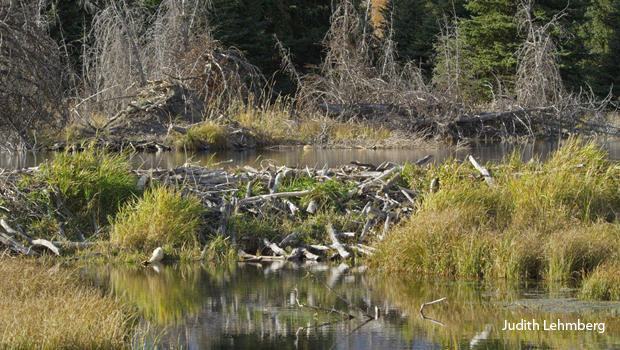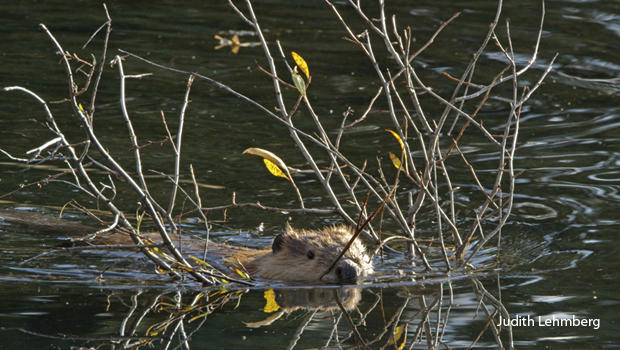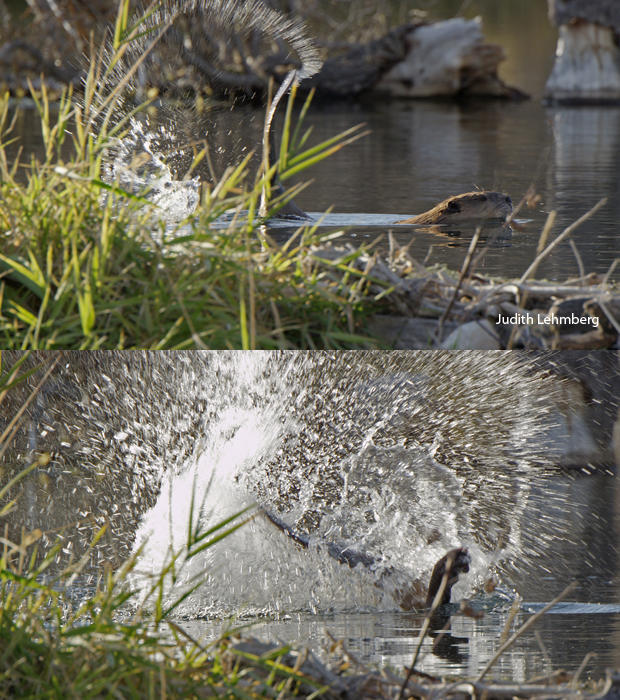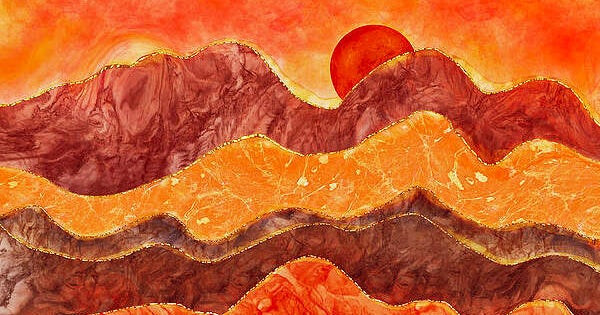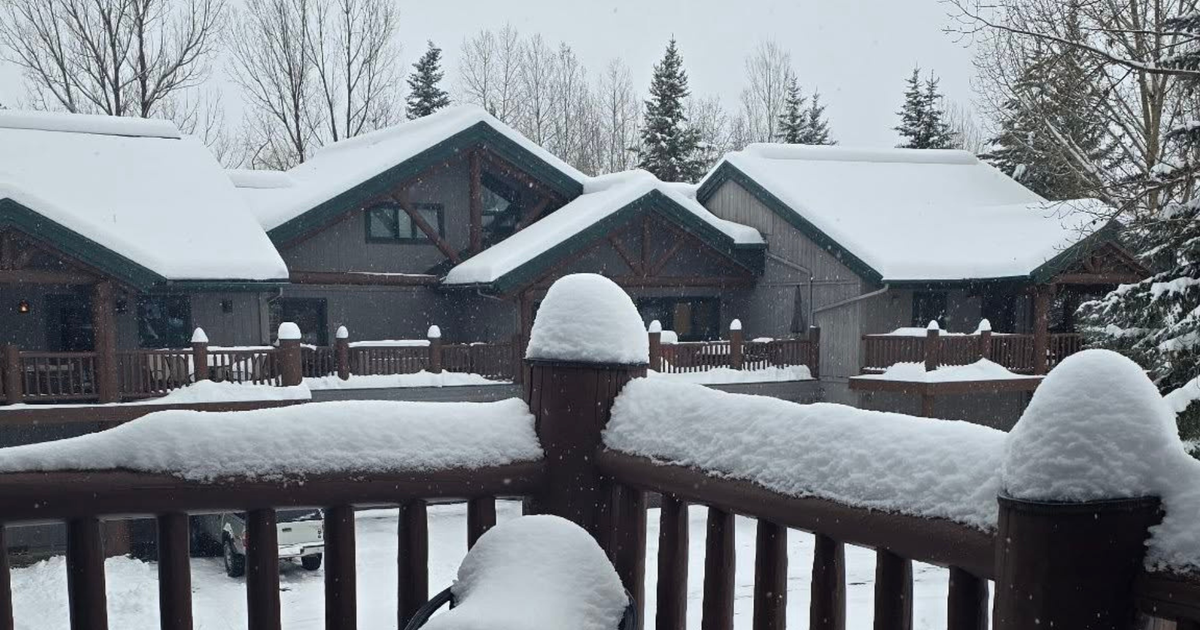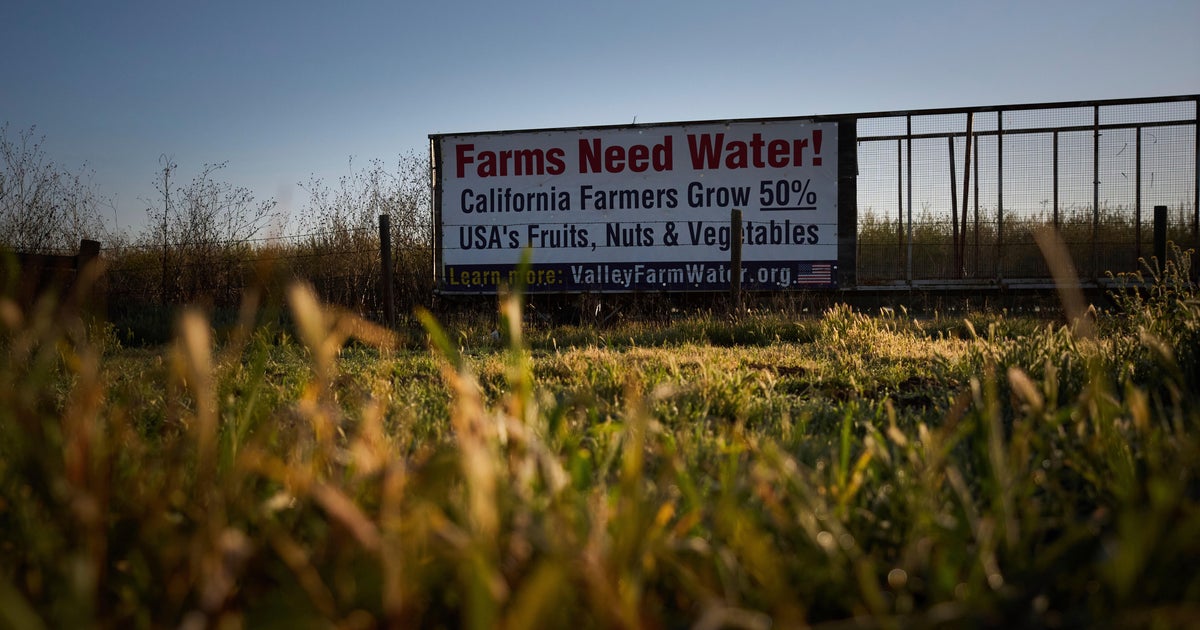Nature up close: Beavers, the master engineers
By "Sunday Morning" contributing videographer Judy Lehmberg.
We first discovered the Tetons and Yellowstone almost 45 years ago when Jackson, Wyo., just south of the Tetons, was a small, sleepy little tourist town. Now the billionaires are crowding out the millionaires, and we can barely afford to eat out there. Most of us have learned to expect that type of change in human activities, but we usually expect natural change to occur more slowly.
One of the first places we discovered in the Tetons 45 years ago was Schwabacher Landing, a beautiful spot on a branch of the Snake River where people would launch boats to fish and float the Snake. It is a popular spot for Teton sunset shots and the occasional wedding. (We've seen two weddings there recently. A note to brides: The ground is all dirt, no pavement. High, spiky heeled shoes are not a good idea!)
They don't launch boats there now, because this branch is now almost completely cut off from the main river and no longer gets enough water to float a boat. That seems really strange to me, that I've have lived long enough to see a river change course.
Not only has the river changed, but beavers have changed Schwabacher as well. When we first saw it, there was just one huge beaver dam. It was well over 50 yards long and it was so wide we walked on it with ease. It used to be one of the photographer's favorite places to come to get a nice reflection of the Tetons in the beaver pond.
You can still get a partial Teton reflection in that pond, but much of it is now obscured by a big lodge that the current beaver generation (being the crafty engineers they are) have built right in the middle of the reflection.
That long dam is gone, too. Several generations of beavers ate all the willows, aspens and cottonwoods in that area. Once they had nothing to eat, they disappeared years ago. Then, spring floods destroyed their dam. Now the willows and cottonwoods have re-grown, and new beavers moved in. Their dam blueprints were different from past generations', because the current residents have created a series of 10 dams and two lodges, instead of the former one big dam and lodge.
The dams are easy to see on Google Maps. The highest dam, closest to the main lodge is at GPS coordinates 43.714683, -110.672058, while one of the most obvious dams is at 43.710243, -110.672185. There are several others on the river both above and below that one.
As they built the newer dams, the beavers created a series of ponds – perfect habitat for trout, ducks, muskrats, moose and frogs, as well as willows and cottonwoods. Beavers are a keystone species because without them many of the above species would not be able to survive there. They literally create habitat for those organisms. Just like an arch will collapse without its keystone, if a keystone species disappears, so do many of the plants and animals that survive in the habitat they create.
The two beaver lodges are built from sticks and mud. The beavers excavate an entrance and a living area that can only be accessed under water. That way they provide protection for themselves and their babies.
Beavers are primarily nocturnal, which obviously makes them hard to photograph. But in the fall they ramp up their activities preparing for winter. They don't hibernate, but they do spend the winter in their lodge and the surrounding pond, especially in very cold areas where the pond freezes over. They need to store as many willow, cottonwood and aspen branches in their pond as they can – food that makes it possible to make it through a long, cold winter. They cut the trees and branches with their teeth. To compensate for chewing all that hard wood, their incisors continue to grow throughout their entire lives.
They also repair their lodge more in the fall, covering it with mud that hardens and provides a strong barrier to predators. Although predators do occasionally catch beavers. Look at the beaver skin closely and you can see its teeth in the lower center of the skin.
When they add mud to their lodge they hold it in their "arms" much like a librarian might carry a tall stack of books, using their chin to balance the mud, and then walk up the lodge on just their back legs.
Beavers are fascinating to watch, especially the babies. They are perfectly capable of diving down and getting their own lunch (willow branches that adult beavers store at the bottom of the pond), but some seem to prefer begging, or even stealing from their elders.
In the last few years the adults have cut down all of the willows close to their dams and lodges, so they must go downstream a good ways to get more. Eventually they will eat all the willows in the area and will have to move. But in the meantime we will enjoy them going about their busy lives collecting willow, taking willows back to their lodge, reinforcing their dams, and slapping their tails on the water when they aren't happy.
Judy Lehmberg is a former college biology teacher who now shoots nature videos.
For more:
- Judy Lehmberg (Official site)
- Judy Lehmberg's YouTube Channel
To watch extended "Sunday Morning" Nature videos click here!

